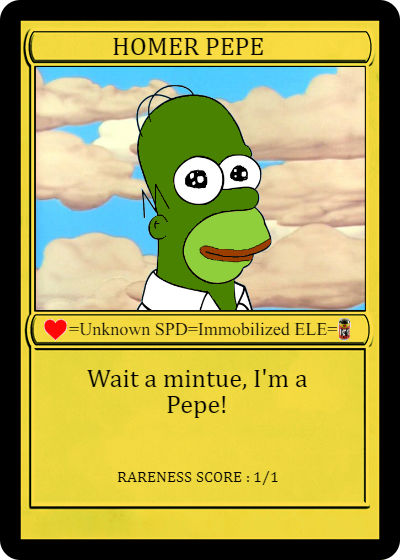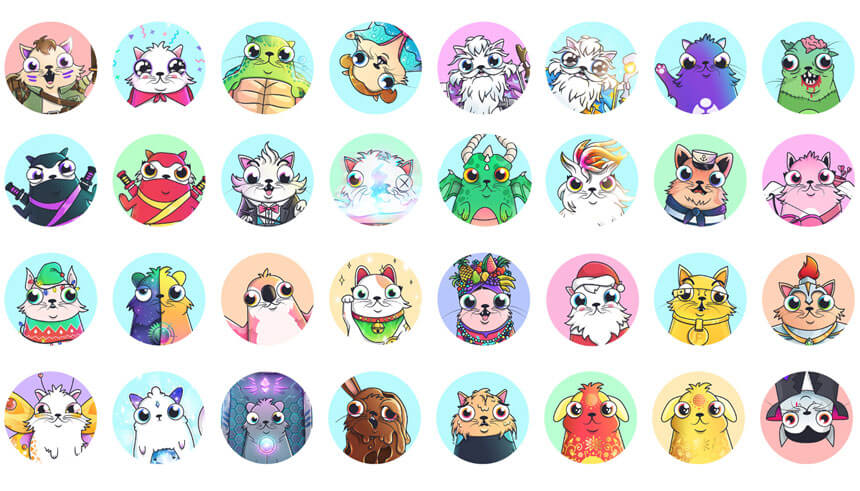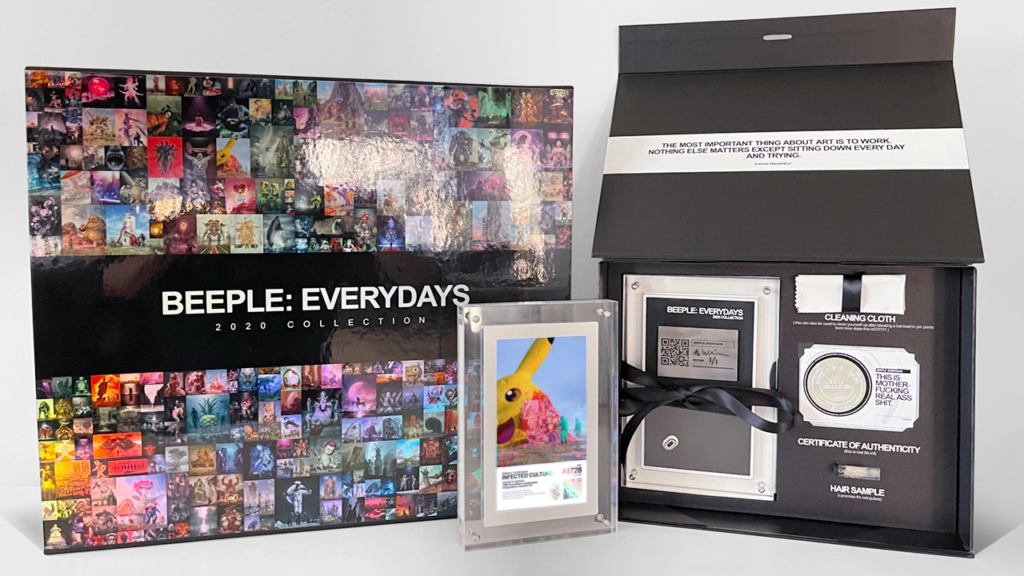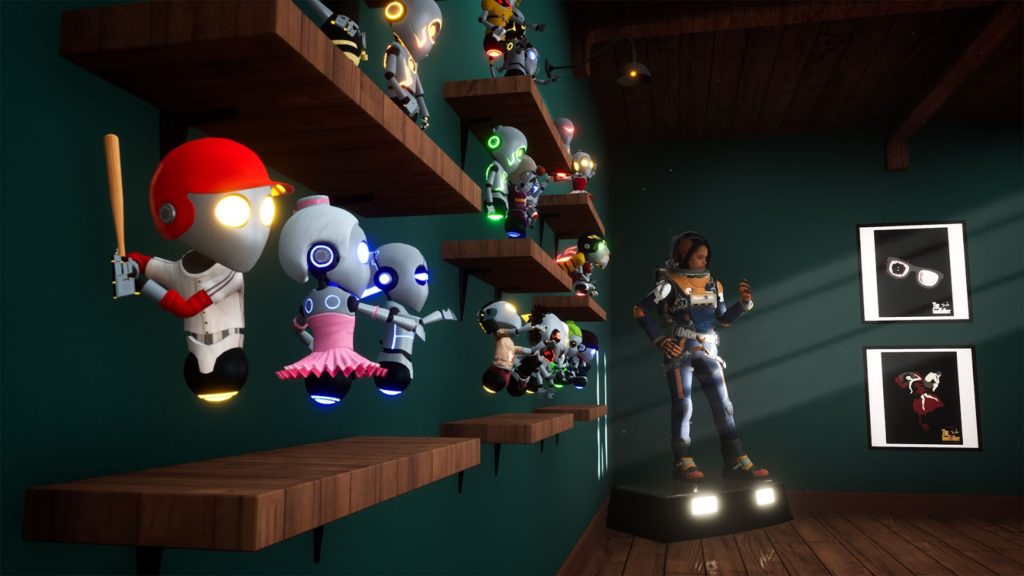The ‘NFT’ is to art and collectibles what the Bitcoin is to currency: a bold new re-imaging of just what it means to “own” something in the 21st century.
NFT art: How do you get paid for a meme?
You can’t get paid for memes…right?
Until recently, that may have been true, but something strange has been bubbling up in the digital art world the past few years that could change all that.

The NFT, or “Non Fungible Token”.
By creating a new type of one-of-a-kind digital currency, art, collectibles, games and yes, even memes, can finally be as unique as their real world counterparts, and potentially be just as valuable.
Artists, developers and entrepreneurs can create NFT collectibles without anything physical attached, and more importantly, use the power of the blockchain to help get fairly compensated when their work appreciates in value.
The purchase of an NFT (an extension of the Ethereum crypto-currency), is registered on the blockchain, which provides a permanent record of that purchase and provides proof of ownership.
Virtual galleries have sprung up across the web, offering NFT artists a e-commerce marketplace worth millions of dollars and worldwide exposure for their exclusive “drops”.
Clever marketers and hypebeasts alike have flocked to this burgeoning new format, with licensed deals and weird memes alike exploding across the web in a Darwinian race for digital clout supremacy.
NFT Art: what the heck is a non-fungible token?
Before we dive into the weird and wild world of ‘virtual art’, let’s start with the basics: What the heck are NFTs and how do they work?
Pronounced “Nifty”, the “fungible” in Non-Fungible Tokens (NFTs) describe something that is identical to something else. So one US dollar, or gram of cannabis or a GameStop stonk, for example, is the same as any other. This is how, in the simplest terms, the world economy works: A dollar is a dollar.
However, some clever and/or bored hackers flipped the idea of cryptocurrency on it’s head to create something wholly unique: a one of a kind currency.
When you buy an NFT, you are buying that virtual token and the work of art linked to it. The transaction is registered on the blockchain, (A digital ledger of transactions that is duplicated and distributed across the entire network of computer systems on the same platform), and the creator’s share is paid for immediately, as a “smart contract” digitally compensates them at the time of any sale.
If you own, for example, a rare pepe NFT, it’s ownership is public, proving it’s provenience and allowing for it to be sold, traded or auctioned, without the original owner being cut out of the process.
The work can be unique (like a painting), or in editions (like a book or trading card) but each token is unique to that work. Unlike “coins”, which require massive amounts of computing horsepower to create something of value, the art is what gives value to the collectible, and the token is more like a receipt that proves who made it and what it’s worth when you bought it.
Once you buy your “art”, you can display it on your computer or TV, inside a special digital frame, print it out, resell it, whatever.
And, while yeah, anyone can print out or display an image from the internet, that image does not belong to them and they cannot trade or sell it, so NFTs can go a long way to help attribute copyright, get collectors to invest, and help artists get paid. It’d be like selling a bootleg “Palyboy” T-shirt…not quite the real thing.
In December, nearly $9m worth of NFT-based art was sold in that month alone, according to the cryptocurrency news website Be[in]Crypto, more than three times the value of sales the previous month.
The web portal nonfungible.com, which measures the NFT market history and statistics shows there have been 5,094,912 NFT sales to-date worth over $146 million.
That’s right…146 million, real dollars, for digital art. To say this could be a game changer is an understatement.
NFT Art: It all started with cats…

Canadian studio Axiom Zen is credited with kicking off the NFT craze with their game, CryptoKitties, a game where players breed and trade little digital cats with unique looks…sort of like a Cyberpunk Beanie Baby.
Each CryptoKitty has a “digital genome” that holds the genetic sequence to all the different traits they can have. These include things like colour, whiskers, beards, stripes, little hats and so on.
Initially, the game was seeded with 100 “Founder Kitties”, some of which have approached over $300,000 in value.
Using the game, anyone can sell their kittens via an auction, where they pick a starting price and an ending price and once again the price declines over time until someone buys it. These automated “market value” adjustments create scarcity and compel ‘players’ to ‘buy low, sell high’…like any other collectible.
And here’s where the democratic nature of the blockchain comes into play”: AxiomZen doesn’t do anything to assign value to the NFT after it’s “minted” the community assigns a premium value to a certain Kitty by simply paying more for them. If more people want cats with hats, then cats with hats cost more… capitalism at it’s simplest.
After it went viral, CryptoKittes became so popular that it was accounting for 10% of ALL commercial transactions using Ethereum, and with this breakout success, other artists and creators began to take notice.
NFT Art: Drops, Galleries and Auctions

Sites like Nifty Gateway (now owned by billionaire Facebook investors the Winklevoss twins) and SuperRare have created a culture of ultra-exclusive ‘drops’ as part of their curation, where digital artists and meme-lords unleash new collections after days or weeks of hype, some times paired with real-world digital frames, merch or other items, often with an irreverent attitude reserved for street artists.
In the classic tradition of trailblazing digital-art weirdos, these artists themselves are hardly traditional—Beeple, for instance, one of the best-selling NFT artists and a legend in 3D animation world, introduces a “drop” (a hyped up sale when new works are released at a certain time, sort of like Supreme clothing or the Apple iPhone) with a statement that starts:
“hahahah, ok so we’re going balls deep on this motherfucker…”.
His last drop generated an estimated 3.5 million is sales, according to NFT news site Loop.

Internet famous graffiti artists Lushsux, credited for bringing memes to the street-art world, has recently launched “Lushsux’ Lambo Fund”, which sold out immediately on Nifty Gateway for prices reaching $15,000 for digital editions of his infamous murals.
But it’s not just crypto-kiddies and weirdos making NFT’s: NYC artist, writer, dealer and art-world gadfly Kenny Schachter has also been producing NFTs, recently offering three digital works on the Nifty platform. His most famed work (and one that kicked off mainstream attention to the format) is his take on Donald Trump’s defeat: titled That’s All Folks, a digital work based on the end title of a Looney Tunes film.

Schachter released a special edition of five for $500 USD each, all sold, and they have all been traded a number of times; one had received a bid of $1,111 at the time of writing. Like all other NFT auctions or sales, each resale receives a small commission for the artist.
But is this only the domain of silicon valley investors or an art-world effete?
Hell ‘naw.
Where can I get my own NFT art?
The NFT “scene” is still in it’s infancy, but the 5 best known ‘marketplaces’ below will give you a good place to start if you want to dive into the weird world of digital ownership.
1. OpenSea
The first NFT marketplace and the largest, OpenSea hosts more than art. Ddomain names, sports trading cards as well as items used in gaming are all available from their site.
2. SuperRare
Home to highly curated, digital artworks, SuperRare is a trendy virtual curated gallery where only hand-picked artists are hosted. Part of the appeal is the limited selection, rather than OpenSea’s endless catalogue of, well, everything.
3. Terra Virtua

By creating a series of virtual dens called ‘Fancaves’, Terra Virtua aims to capture the obsessive, more hyper-masculine collectors market. NFT owners can show off their collections in their very own digital crib. They offer classic collectibles like movie posters, 3D figurines and music, all in NFT form.
4. Rarible
Rarible might be the easiest site to jump into the world of NFTs. Offering a curated collection of everything from art to memes to domains, their shopping experience is fast and easy and much less daunting than the others listed here.
5. Nifty Gateway
Highly curated and backed by billionaire investors, Nifty Gateway showcases some of the highest profile collections on the web. While most of the big-ticket collections are our of range for all but the wealthiest collectors, works from well known artists like Filip Hodas and Rick & Morty creator Justin Roiland are easily accessible to regular art collectors.
What’s the future of NFT art?
With all the hype NFTs have been making, major companies and big brands have already begun taken an interest and gotten involved in the industry.
Several of the biggest brands on the planet are now developing blockchain based games, collectibles and virtual worlds, including Samsung, Nike, the UFC, just to name a few.
But while these major players may bring more awareness to the format of NFT art, the steady supply of new creators, new marketplaces and new ways to tweak the “smart contract” system originally hacked by Axiom Zen allows for a nearly infinite ceiling to where this strange new world can grow.
Unlike Bitcoin or other ‘fungible’ tokens, creating a one of a kind token isn’t nearly as difficult as creating a new bitcoin, something only available to the most powerful “miners” left standing.
With a low barrier to entry and a dedicated subculture of collectors looking to “get in early” on unique artworks, NFT art may finally be a way for you meme makers to get paid.
Heading image: ‘Ether in the Sky’ by Yog Joshi